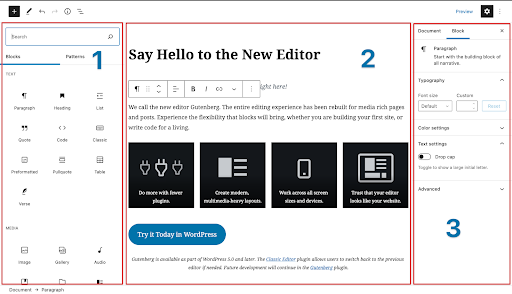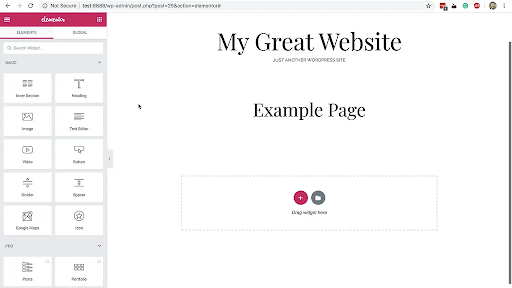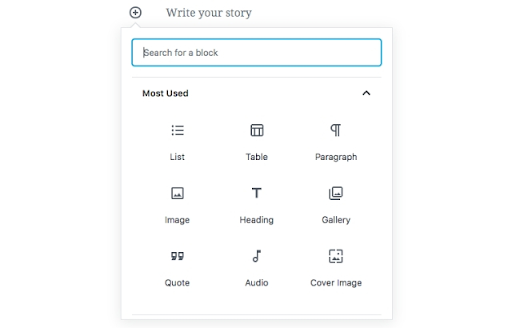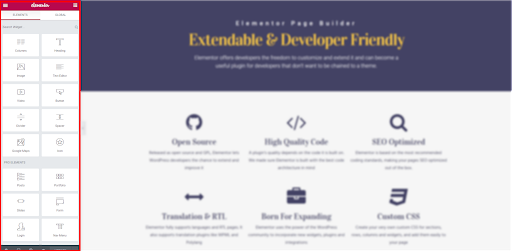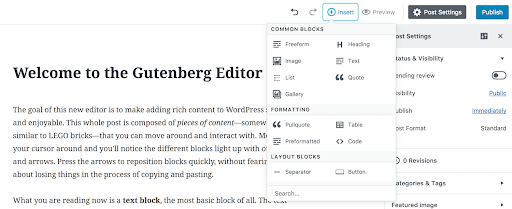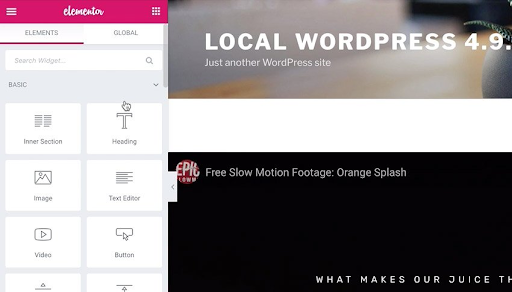Gutenberg vs. Elementor: Which One Is Right for You?
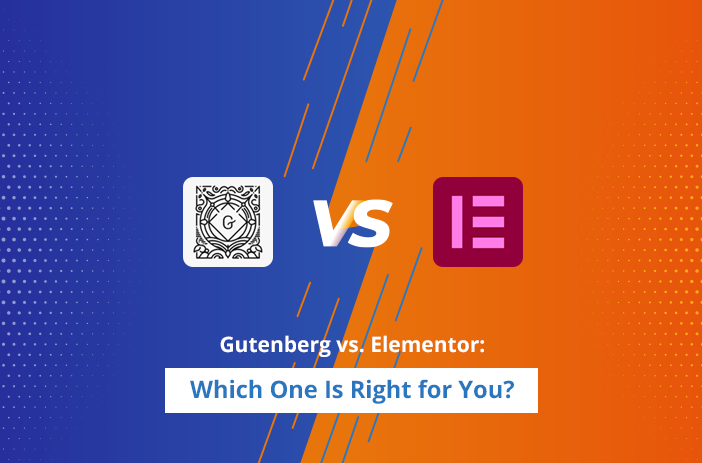
If you are a marketing manager or business owner who needs to manage the website on a day to day basis, you certainly don’t want to be learning codings to make small changes.
You might want to try drag and drop page builders to make your life easier.
But the problem is there are many page builders in the WordPress marketplace these days. To make your life easier, we will compare these most popular two.
When you are confused about choosing the right editor for your WordPress website, which one should you choose?
We have Gutenberg – the native editor of WordPress. Gutenberg was the replacement for the classic editor and it comes with many new features including block-based editing for websites.
Next, we have the Elementor page builder. It is a complete page builder that allows anyone to create a website from scratch.
In this article, we will compare Gutenberg and Elementor page builders and compare their features. We will compare both plugins so that you can understand which one is best for your website.
Gutenberg editor for WordPress
What is Gutenberg?
Gutenberg is a content-level block editor for WordPress that offers users numerous options to create and format content. It is now a native editor and comes pre-installed.
What is Elementor?
Elementor is a page-level drag-and-drop editor for WordPress. It is used to design websites without coding. Anyone that would like to create their own website without a single line of code could go for Elementor page editor.
Factors for Comparison of Gutenberg vs. Elementor
Let’s see both Gutenberg and Elementor in action and see which one is best for you.
1. Speed
Focus on speed. Today, Google focuses on performance for ranking any website. If your website is not loading within 3 seconds, people will start bouncing off your website. When they bounce off your website, Google will de-rank your website. That is why it is important to focus more on speed.
Elementor plugin in action
Gutenberg is the native WordPress editor. It means that there is no extra code attached to the Gutenberg block editor. It is lightweight and fast and allows you to customise the website in any way you want.
On the other hand, Elementor is a great plugin. But it comes with a lot of extra code that can decrease the performance of your website. In comparison with Gutenberg, Elementor doesn’t perform well in terms of speed.
Winner: Gutenberg
Limitations
Gutenberg is the native WordPress plugin available. But it has some limitations that can’t help create a complete website.
- It can’t customise the header, footer, and side widget.
- If you want to create a complete landing page from top-to-bottom, then Gutenberg can’t do that.
- However, Gutenberg can customise the body of the WordPress website
On the other hand, Elementor is a great WordPress plugin that lets you create a complete website from scratch. Elementor can create a landing page as needed.
There are many themes available with Elementor that can help create even better user experiences.
2. Learning Curve
Gutenberg has a shallow learning curve. It is a great plugin for anyone that wants to create a website on WordPress. They will get Gutenberg installed from scratch. So, you have no other option but to use Gutenberg. The editor is easy to use and offers everything in a single click. Users can search block buttons through the menu already available to them.
On the other hand, Elementor has a far steeper learning curve in comparison with Gutenberg. It is easy to manage but complex because of the type of landing page being created.
You get a bar on the side that allows you to add new blocks to the website. You can edit and customise the text, design, and image/videos on each fold.
Elementor offers grid-based blocks. Each block can have rows or columns that you can edit. You can even add new Elementor blocks to your landing page depending on the requirements.
Winner: Elementor
>>> Get Your WordPress Project Off-the-Ground. Book a Call for Expert Help
3. Flexibility
Is Gutenberg Flexible? Yes, it definitely is!
Let’s say you add content to the website. Now you want to customise the content. What would you do? With Gutenberg, you can easily change the layout, add columns on the body section of your landing page or blog.
As you can see, the composer comes with multiple blocks that you can customise easily.
On the other hand, Elementor is not that easy to customise for anyone. If you have not used page builders before, you would need some tutorials to easily understand how Elementor works.
But once you get a hang of Elementor, it becomes a lot easier to manage and customise your site content with Elementor.
As we have already discussed the learning curve, Elementor would be great for your business in the long-run.
Winner: Gutenberg
4. Scalability
Gutenberg is great when it comes to scalability. You can add the following options to your website with Gutenberg block editor alone.
- Buttons
- Columns
- Fonts
- Quotes
- Images
- Table
- Codes
- Separators
- Gallery
- List
- Spacer
And a lot more…
But with Elementor, you can do even more.
How? You can add the following with Elementor:
- Template customization
- Header and Footer editing
- Form
- Custom positioning
- Typography
- Margins and padding
- Flip boxes
- CTAs
- Payment
- Checkout
And a lot more…
So yes, Elementor is a lot more scalable in comparison with Gutenberg. Most people today are using Elementor to create their websites because of the options available with this plugin.
Winner: Elementor
So…
Gutenberg: 2/4
Elementor: 3/4
Both Editors have different purposes and both are great when it comes to content and page level editing needs.
Which One Should You Choose? Gutenberg or Elementor
Now the question that you always wanted an answer to:
Where does Gutenberg shine?
- For basic-level content editing
- For improving the content format
- For creating template for your website content
- For adding buttons and sections to your blog posts
- For free customizations (remember that Elementor is paid)
Gutenberg is a great plugin for bloggers and affiliate marketers that don’t want to add any extra plugin to their website. Gutenberg offers buttons, tables, and sections that they usually install through plugins. So in a way, Gutenberg has made it a lot easier for them to create content for the website.
Where are Elementor Shines?
- When you want a premium design
- When you want blocks that you don’t get with Gutenberg editor alone
- When you have a developer that can customise the website
- When you have to redesign the complete website
- When you want a theme that works with Elementor
- When you want templates available to choose from
In comparison with Gutenberg, Elementor is a full-fledged customization plugin for WordPress. It is not just a content editor and should not be treated as one.
Bottom-line
If you are just looking for basic content-level editing then Gutenberg alone will serve you great. But if you are looking for something that can offer much more than that, then Elementor would be a great choice for that.
There are many other plugins available like Elementor such as Beaver Builder, Divi, and even WP Bakery. All of these plugins offer similar features and are used for page-level editing of the website.
Whether you want to redesign your website, or want to just add new landing pages to increase your overall sales, these types of page-level editors would be great for you.
Looking to customise Your WordPress Website?
If you are looking for someone that can redesign your WordPress website from scratch or do a completely new custom WordPress development, then look no further. Our WordPress experts can get the job done.
We have years of experience in site customizations, development, optimizations, and debugging.
